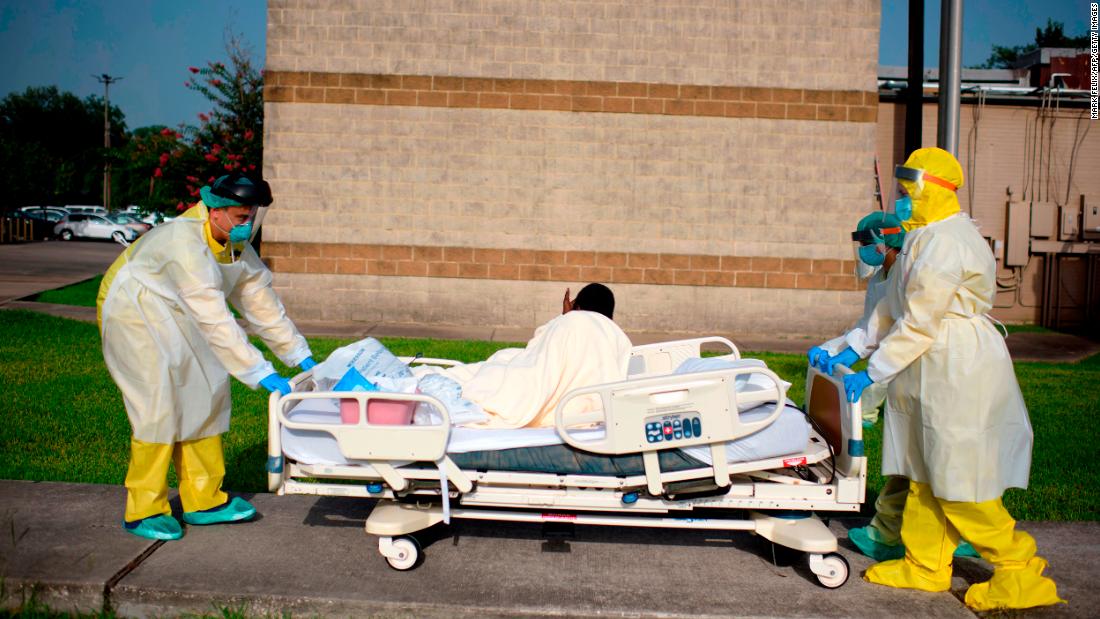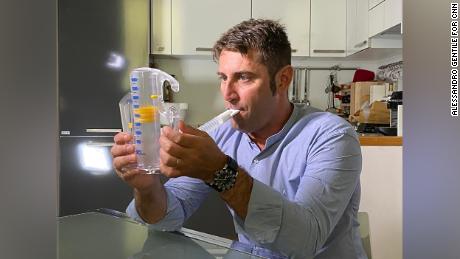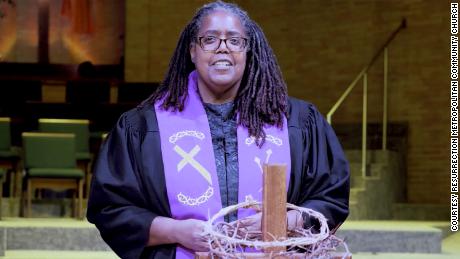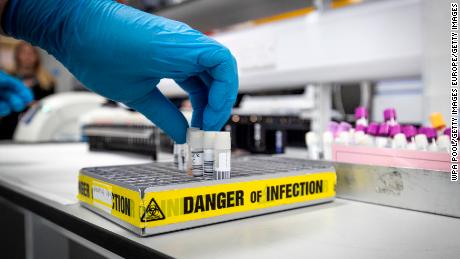The US has surpassed its own daily record of total new Covid-19 infections at least nine times since June 16
At least 140,120 Americans have died of the virus, according to Johns Hopkins University.
Florida Gov: no prosecution for those not wearing masks
In Florida, Gov. Ron DeSantis has resisted implementing a statewide mask mandate and said Saturday the state would not be “prosecuting people” for not wearing masks.
When asked about the possibility of stricter face mask regulations throughout the state, DeSantis said face coverings have been advised since the state’s first phase of reopening.
“When you’re living your life and trying to open up the country, you are going to come into contact with people. And for that reason, we know that masks are really important, and we should be using them everywhere,” he said.
“Fifteen nurses in the ICUs alone called in sick today, just at Jackson Main,” she told the affiliate. “They’re exhausted. They’ve been doing this since March.”
Texas reports more than 10,000 cases for fifth day
In Texas, similar calls for help come from healthcare professionals as cases continue to climb across the state.
And for the fifth day in a row, the state of Texas reported more than 10,000 new cases in a day, according to state data. The 10,158 new cases reported Saturday bring the state’s total case tally to at least 317,730.
Texas Gov. Greg Abbott, who once pushed for one of the most aggressive reopenings, has in recent weeks advocated continuously for the use of face masks to help businesses stay open.
How long should you isolate for?
Someone who has tested positive for the virus and has symptoms may discontinue isolation 10 days after the symptoms first appeared as long as 24 hours have passed since the last fever without the use of fever-reducing medications and if symptoms such as coughing and shortness of breath have improved.
People with coronavirus symptoms isolating at home and with access to tests can leave isolation if a fever has passed without the use of medication, if there is an improvement in symptoms, and if tests taken more than 24 hours apart come back negative, according to the guidelines.
For those who have tested positive but have no symptoms, the CDC had two options: a time-based strategy and a test-based strategy.
A person without symptoms can discontinue isolation 10 days after the first positive test and if they have not subsequently developed symptoms. If a person develops symptoms, then the symptom-based or test-based strategy should be used, according to the guidelines.
People who have tested positive for the virus and are asymptomatic can also discontinue isolation if the results of two tests taken more than 24 hours apart come back negative.
CNN’s Melissa Alonso, Kay Jones, Jamiel Lynch, Gisela Crespo, Rosa Flores and Dan Shepherd contributed to this report.
![]()










